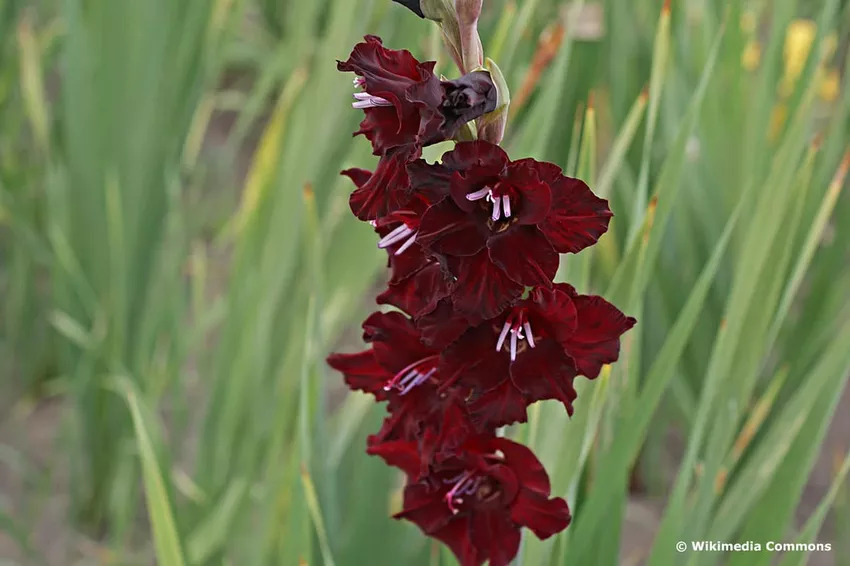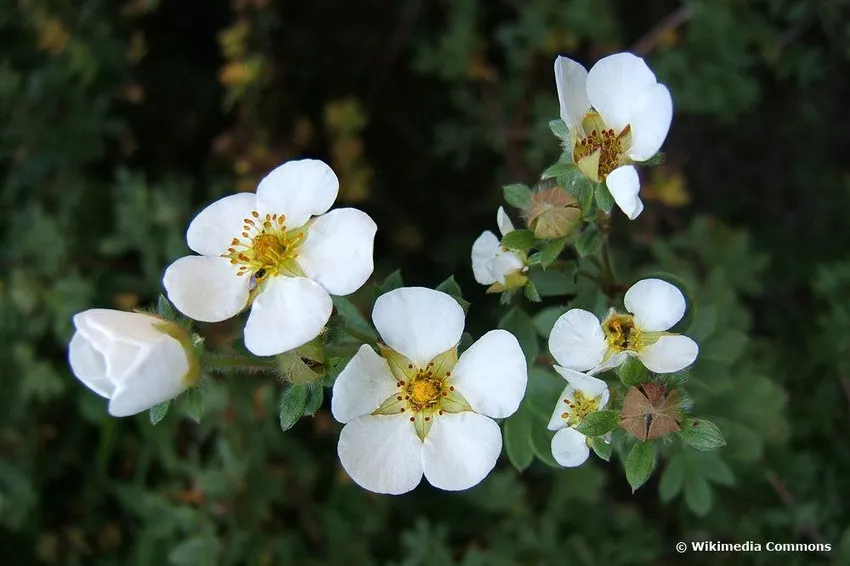
Bumblebees are peaceful big buzzers that collect pollen from the flowers. For a bumblebee-friendly garden, there are several plants that the cozy insects especially love. A few are presented in the article.
In a nutshell
- from early spring to late autumn, bumblebees need a rich supply of food
- a few days without food can mean starvation for an entire colony of bumblebees
- a bumblebee-friendly garden offers a wide range of early, summer and late flowering plants
- both ornamental plants, hedge plants, wild plants and cultivated plants offer the bumblebees plenty of food and lure them into the garden
- a colorful cottage garden with fruit, vegetables, blooming flowers and hedges is ideal for attracting bumblebees
early bloomers
The early bloomers are all the plants that form their flowers in March and April at the latest. These are well suited to attract the bumblebees after hibernation and to provide the first food. And these plants are also particularly decorative for your own garden because they banish the dreary gray of winter:
Squill (Scilla)
 Two-leaf squill (Scilla bifolia)
Two-leaf squill (Scilla bifolia)
- Liliaceae family
- suitable for naturalising
- sprouts anew every year
- many different types
- underplanting of trees
- Location sunny to slightly shady
- star shaped blue flowers
- first flowering in February
- hardy
Sweet violet (Viola odorata)
 Source: Jörg Hempel, Viola odorata 02, edited by Plantopedia, CC BY-SA 2.0 DE
Source: Jörg Hempel, Viola odorata 02, edited by Plantopedia, CC BY-SA 2.0 DE
- Genus of violets (Viola)
- also known as March violets
- ground cover
- undemanding
- partially shaded location
- white, pink and purple flowers
- Flowering time from March to April
- hardy
Crocus (Crocus)
 Crocus, Crocus
Crocus, Crocus
- Iris family (Iridaceae).
- about 90 species known
- Fairy crocus (Crocus tommasinianus)
- Spring Crocus (Crocus vernus)
- Small crocus (Crocus chrysanthus)
- Sieber Crocus (Crocus sieberi)
- all early bloomers
- sunny to partially shaded location
- hardy
Star magnolia (Magnolia stellata)
 The star magnolia proves to be an extremely easy-care plant.
The star magnolia proves to be an extremely easy-care plant.
- Magnolia family (Magnoliaceae)
- originally native to Asia
- very valuable flowering shrub
- Flowering from early March to April
- grows as a small shrub or tree
- white to pink flowers
- full sun location
- particularly beautiful as a solitaire
- hardy
Notice: You can tell from the blossoms of the magnolia that winter is finally over. Because as long as there is still frost, no decorative flowers will appear on the tree or shrub.
Tulip (Tulipa)
 Tulips, Tulipa
Tulips, Tulipa
- Liliaceae family
- many different flower colors
- over 5000 different varieties
- from short to tall
- hardy
- Location sunny
Tip: Tulips can be combined well with many different types of bulbs.
Winter cherry (Prunus subhirtella f. autumnalis)
 Winter cherry, Prunus subhirtella
Winter cherry, Prunus subhirtella
- shrub or tree
- can grow up to six meters high
- sprawling growth
- many small flowers
- pink and white
- Flowering time from November to May
- ideal for attracting bumblebees
- sunny location
- no edible fruit
Winter jasmine (Jasminum nudiflorum)
 Jasminum nudiflorum
Jasminum nudiflorum
- Genus Jasminum
- originally native to Asia
- climbing plant or shrub
- yellow flowers
- overhanging growth
- Flowering from December to March
- sunny to partially shaded location
Notice: Only the winter jasmine is hardy. All other species of the genus Jasminum must be protected from frost and cold in winter.
witch hazel (witch hazel)
 Hamamelis x intermedia
Hamamelis x intermedia
- Witch hazel family (Hamamelidaceae)
- decorative flowering shrub
- yellow to red flowers
- Flowering from January to the end of March
- many hybrids available
- hardy
- sunny location
summer bloomers
After the early flowering plants slowly wither, the bumblebees have to be offered more food. This is possible thanks to the numerous summer-blooming plants, which blossom in full from May to August:
Apple tree(Malus domestica)
 Apple tree, malus
Apple tree, malus
- belongs to the rose family (Rosaceae)
- most popular fruit tree
- many different varieties
- related to quinces, medlars and pears
- Flowering from late April to mid-May
- late varieties only in June
- pink to white flowers
- sunny location
- Flower does not tolerate late frost
Blue Rhombus (Perovskia)

- Labiatae family (Lamiaceae)
- subshrub
- also known as silver bush
- deep blue or violet lipped flowers
- Flowering period from August to September
- sunny location
- hardy
Dahlias (Dahlia)

- daisy family (Asteraceae)
- well over 10,000 varieties and hybrids
- Flowers of all colors
- full sun location
- abundant flowering from May
- Height varies by variety
- from small to over a meter
True jasmine (Jasminum officinale)
 True jasmine, Jasminum officinale
True jasmine, Jasminum officinale
- climbing plant
- up to three meters high
- strongly scented flower
- white or pink flowers
- Flowering period from June to September
- sensitive to frost
- sunny to partially shaded location
Gladiolus (gladiolus)
 Source: Хомелка, Gladiolus 'Black Pearl', Edited by Plantopedia, CC BY-SA 4.0
Source: Хомелка, Gladiolus 'Black Pearl', Edited by Plantopedia, CC BY-SA 4.0
- Iris family (Iridaceae)
- Hybrids up to 150 centimeters high
- Flowering period from June to September
- many different flower colors
- many flowers on one stem
- very bumblebee friendly
- Location sunny and sheltered from the wind
- otherwise long stems will break quickly
- frost-sensitive bulbous plants
Cherry laurel (Prunus laurocerasus)

- popular hedge plant
- up to four meters high
- good for attracting bumblebees
- white flowers
- Flowering period from May to June
- flowers on grapes
- Beware of poisonous fruits
- hardy
Cherry tree (Prunus)
 Cherry, Prunus
Cherry, Prunus
- different sorts
- sweet or sour cherries
- white flowers
- Flowering time depending on the variety
- from late April to late May
- sunny location
Peonies (Paeonia)
 Paeonia officinalis, Peony
Paeonia officinalis, Peony
- large variety of varieties
- Farmer's peony (Paeonia officinalis)
- pretty tough
- many different flower colors
- Flowering period from May to June
- sunny to shady location
- Support with a stick due to thick flowers
- large flowers can attract bumblebees
- hardy
- most famous variety
Peach tree (Prunus persica)
 Peach tree, Prunus persica
Peach tree, Prunus persica
- can grow up to six meters high
- in the garden usually cultivated two to three meters
- pink flowers
- Flowering time April to May
- hardy
- full sun location
- protect from cold east wind
- ideal place in front of warm south face
- ideal for attracting bumblebees
Tip: Many types of berries such as raspberries, blackberries, gooseberries or currants are also bumblebee-friendly in early summer and attract bumblebees.
late bloomers
Late bloomers are all autumn plants that survive the first frosty nights. Their flowers usually appear between September and November, depending on the weather. They are therefore very friendly to bumblebees, because the animals can get the last food they need before they go into hibernation.
Asters (Aster)

- Smooth-leaf aster (Aster novi-belgii)
- valuable autumn perennial
- up to 150 centimeters high
- Flower colors white, pink or violet
- Flowering period from August to November
- hardy
- sunny location
- can also be cultivated in tubs
Bee tree (Tetradium daniellii var. hupehensis)

- small tree
- up to 1.20 height
- produces a lot of nectar
- attracts insects, very bumblebee friendly
- also known as honey ash
- white flowers
- Flowering time July to September
- only conditionally hardy
- sunny to partially shaded location
Chrysanthemums (Chrysanthemum Indicum Hybrids)

- daisy family (Asteraceae)
- perennial
- up to a meter tall
- Flower colors white, pink, red, orange and yellow
- Flowering period from August to November
- there are varieties that flower well into the winter
- sunny to semi-shady location
Fingerbush (Potentilla fruticosa)
 Source: Wildfire, 2007-08-30Potentilla fruticosa08, Edited by Plantopedia, CC BY-SA 3.0
Source: Wildfire, 2007-08-30Potentilla fruticosa08, Edited by Plantopedia, CC BY-SA 3.0
- small shrub
- suitable as a hedge plant
- white, red, pink, orange or yellow flowers
- Flowering period from June to October
- very floriferous
- therefore very bumblebee friendly
- hardy
- sunny location
Autumn cyclamen (Cyclamen hederifolium)
 Autumn Cyclamen
Autumn Cyclamen
- pink to white flowers
- Flowering time from September to November
- Caution poisonous
- hardy
- sunny to semi-shady location
- is under nature protection
Autumn crocus (Colchicum autumnale)
 Autumn crocus, Colchicum autumnale
Autumn crocus, Colchicum autumnale
- Colchicaceae family
- pink and white flowers
- clump-forming
- ground cover
- Flowering period from August to October
- hardy
- sunny to partially shaded location
Notice: Unfortunately, the autumn crocus is highly poisonous and only suitable for gardens if there are no small children or pets around.
Seven Sons of Heaven Shrub (Heptacodium miconioides)
 Source: peganum from Henfield, England, Heptacodium miconioides (15227383878), edited by Plantopedia, CC BY-SA 2.0
Source: peganum from Henfield, England, Heptacodium miconioides (15227383878), edited by Plantopedia, CC BY-SA 2.0
- Honeysuckle family (Caprifoliaceae)
- shrub or small tree
- up to four meters high
- white flowers
- Flowering period from August to October
- sunny to partially shaded location
- hardy
Tip: Later in early winter, the red berries serve as food for native birds.
frequently asked Questions
Why is it so important to provide bumblebees with an abundance of food?Bumblebees in particular need a lot of food to survive. As soon as the first warm days arrive in spring, they wake up from their hibernation and start looking for food. Only a few days in a row, in which the fat insects cannot find flowers from which to collect pollen, are enough to cause an entire colony of bumblebees to starve to death.
Does it matter which plants I provide?Bumblebees fly at everything that is in bloom. That is why a colorful cottage garden is so bumblebee-friendly. A tidy garden, on the other hand, in which only a few flowering plants are cultivated, offers little food. An entire settlement that relies more on green than on flowering hedges and plants and seems rather sterile cannot attract bumblebees.
What can I offer the bumblebees to attract them?Make your garden or at least one bed colourful. Use flowering hedges as privacy screens instead of green ones. Cultivate berries and fruit trees. Anything that blooms between early March and late October is well suited for a bumblebee-friendly garden.
Is a wild herb bed also suitable for attracting bumblebees?The wild herbs, which bring many flowers over the summer, are also very bumblebee-friendly. You can therefore confidently create a wild herb bed in your garden or simply leave weeds that have sown themselves and do not bother you.